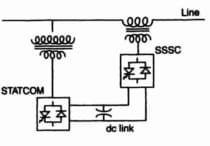 |
| Electrical Materials MCQs |
1. Which of the
following materials is used for making helicopter structure?
a. Thoriated nickel alloy
b. carbon fibre polymeric composite
c. Stetite
d. Pure aluminium
2. Point
imperfections, during interaction with each other,_____.
a. Are thermodynamically stable
b. Are not affected at all
c. Lower their total energy
d. Both (a) and (b)
3. The impedance may
be minimized by_______.
a. Surface treatment
b. Making metal in fibre form
c. Thermal energy
4. All of these
4. The forces
involved in the chemical bonding are_____.
a. Coulomb’s forces
b. Plank’s forces
c. Newton’s forces
d. Paulis’ forces
5. The nature of bond
is governed by_____.
a. Basis of filling of space lattice
b. Orientation of crystal
c. Electron structure of the atom
d. Geometry of unit cell
6. A material is most
stable when its potential energy is_____.
a. Zero
b. Minimum
c. Infinite
d. Maximum
7. The ACSR
(Aluminium conductor steel reinforced) is an example of______.
a. Whisker reinforced composite
b. Bulk moulding compound
c. Metal fibre composite
d. Agglomerated composite
8. The structure of
quartz (SiO2) is______.
a. Orthorhombic
b. Face centered cubic
c. Body centered cubic
d. Hexagonal
9. Crystals like
diamond and silicon are brittle, because_____.
a. They contain very few dislocations
b. The stress to move a dislocation is high
c. They are non-crystalline
d. They contain no dislocations
10. The crystal
structure of most of the common metals is______.
a. Linear
b. Orthorhombic
c. Cubic
d. Hexagonal
11. In a crystal
lattice, what are the vacancies created by the absence of certain atoms known
as?
a. Crystal defects
b. Pauli defects
c. Schottky defects
d. Hertz defects
Dielectric properties of
Materials
12. Dielectric
materials _______.
1. Have high specific
resistance
2. Have positive
temperature coefficient of resistive
3. May belong to the
ceramic family
4. Exists only in
solid and liquid form but not in gas form
Which of the above
characteristics of dielectric material holds true?
a. 1 and 3 only
b. 2 and 4 only
c. 1, 3 and 4 only
d. 2, 3 and 4 only
13. Which of the
following dielectric material possess maximum dielectric strength?
a. Mica
b. Glass
c. CO2
d. Bakelite
14. The dielectric
strength of a natural rubber is 40 kV/mm at 60 Hz. What is the thickness of
insulation on a wire carrying 33 kV to sustain the breakdown?
a. 0.0082 mm
b. 0.82 mm
c. 8.2 mm
d. 0.082 mm
15. A good insulating
material should have______.
a. Low dielectric strength but high dielectric constant
b. Low dielectric strength and dielectric constant
c. High dielectric strength and dielectric constant
d. High dielectric strength but low dielectric constant





0 Comments
If you have any doubt, feel free to ask.